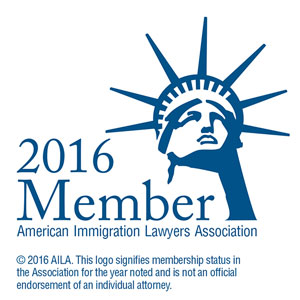The Great Betrayal: Supreme Court’s Ratification Of Trump’s Termination of CHNV Parole
On March 25, 2025, DHS terminated parole programs that had allowed an estimated 530,000 Cubans, Haitians, Nicaraguans, and Venezuelans to enter the United States legally in 2022 and 2023. The federal register notice stated that “Paroled aliens, including those paroled under the CHNV parole programs, may apply for any immigration benefit or status for which they may be eligible, including discretionary employment authorization under the [8 CFR 274a.12(c)(11)] employment eligibility category…” However, on February 14, 2025 USCIS implemented an administrative hold on processing of all applications for benefits filed by CHNV parolees, as well as individuals who entered the United States pursuant to the United for Ukraine program, or the Family Reunification Parole process.
DHS’ termination of these parole programs was quickly challenged through litigation. See Svitlana Doe, et al., v. Noem, et. al., No. 25-cv-10495 (D. Mass. Apr. 14, 2025). On April 14, 2025, the United States District Court for the District of Massachusetts temporarily stayed the early termination of the CHNV parole programs, as well as EADs issued in connection with these programs. The district court held that Plaintiffs were likely to succeed in their claims that DHS’ termination of the program was arbitrary and capricious, reasoning that the Federal Register Notice
“gave no explanation or support for the conclusion that the CHNV programs were addressing relevant humanitarian concerns through something other than case-by-case determinations. The FRN also gave no rationale for its conclusion that such humanitarian concerns no longer justified the existing parole programs and offered no reasons for categorically revoking parole despite the humanitarian concerns previously articulated by DHS. Finally, despite asserting that “DHS believes that consideration of any urgent humanitarian reasons for granting parole is best addressed on a case-by-case basis consistent with the statute, and taking into consideration each alien’s specific circumstances,” 90 Fed. Reg. at 13612, the FRN provides for no individual case-by-case determination as to the humanitarian concerns facing each parolee whose parole is being truncated.”
DHS appealed to the First Circuit, which declined to overturn the stay, and ultimately to the Supreme Court.
On May 30, 2025, the Supreme Court issued an abbreviated order blocking the district court’s stay. This order in effect allows DHS’ termination of the parole programs to continue even while the First Circuit makes a decision on the merits of the case. In her dissent, joined by Justice Sotomayor, Justice Ketanji Brown Jackson argued that the Court’s order “undervalues the devastating consequences of allowing the Government to precipitously upend the lives and livelihoods of nearly half a million noncitizens while their legal claims are pending…While it is apparent that the Government seeks a stay to enable it to inflict maximum predecision damage, court-ordered stays exist to minimize—not maximize—harm to litigating parties.”
The Trump administration’s abrupt termination of the program leaves hundreds of thousands of individuals vulnerable to being placed in removal proceedings and potentially returned to turbulent and unsafe home countries. It also puts into doubt the validity of the EAD under 8 CFR 274a.12(c)(11). Although the EAD under (c)(11) may be valid on its face if it has not expired, a public announcement of the termination of the program would put employers on notice that impacted employees are no longer authorized to work under 8 USC 1324(a)(1)(A) and (2). The Supreme Court order has stayed the District Court’s order that prevented the DHS from terminating CHNV parole, including (c)(11) EADs issued pursuant to the program. Still, employers may not know whether the (c)(11) EAD is associated CHNV parole or some other kind of parole, and it may be discriminatory to ask an employee to provide the basis for the (c)(11) EAD. EADs issued to CHNV parolees bear the same code as EADs issued to other parolees, unlike, for example, DACA EADs, which have a different code from other deferred action cases. Moreover, it is entirely plausible that that many CHNV parolees may have c(8) EADs by now based on pending I-589 asylum applications, and 8 USC 1324(a)(B) does not obligate an employer to ask. Employers have to walk a fine line to avoid discrimination in requesting additional documents from employees to determine if an employee is no longer work authorized. AILA advises that “organizations employing CHNV parolees should evaluate the risks and potential consequences associated with identifying this specific population of their workforce, how to update I-9 records and confirm these individuals’ continued (in)eligibility to work in the United States, providing these individuals with an opportunity to present other documents from the List of Acceptable Documents, and the potential impact on the organization’s workforce planning strategies and the continuity of their business operations.” See AILA Doc. No. 25042408.
The Supreme Court’s ratification of this betrayal is even more disappointing, however. Individuals who entered the United States pursuant to these parole programs did so legally, only to have the rug cruelly ripped out from under them.
*Kaitlyn Box is a Partner at Cyrus D. Mehta & Partners PLLC.





Leave a Reply
Want to join the discussion?Feel free to contribute!